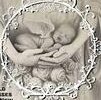The clothing worn by a loved one at a funeral can have an effect on the way family members view that person, and what they say about him or her. For many people, dressing their dead relatives in clothes that honor their identity and personality is a comforting act of love. While traditional burial attire tends to lean toward formality, the choice of what a person wears after death can vary widely according to cultural norms and personal preferences.
Dressing a loved one for a funeral is not only comforting to the survivors, but also helps those who come to pay their respects. “There is an intimacy in the process of choosing what someone will wear for his or her final resting place and putting it on,” says Basile. “It’s like saying goodbye.”
In addition to a family member’s closet, the deceased can also be dressed in clothing that was purchased specially for this purpose. Many of these garments, which are designed to resemble daywear or evening gowns, are available from funeral homes or online retailers. Others are made for specific events such as a memorial service or a visitation. Some are designed to look more like a shroud, suitable for green funerals or woodland burial grounds.
A recent innovation in the production of burial clothes has been a process called “digital embalming,” which makes it possible to preserve the body for public viewing with little need for a casket, making these types of garments even more popular. The digital process allows for detailed work in areas such as stitching and embroidery, which adds a sense of elegance and dignity to the outfit.
One of the most difficult decisions for families arranging a funeral is what to wear their deceased relative in when they are being buried or cremated. While there is no legal requirement that a person be dressed for this occasion, the practice can make the final moments of a loved one’s life feel less sterile and clinical.
Although it is possible for anyone to be buried in any clothing, most people choose garments that reflect their lifestyle and religious beliefs. Some common choices for men include suits, dress shirts and ties, while women tend to select dresses or skirts.
In the past, funeral directors sometimes sourced burial garments from local businesses or private suppliers that specialized in lingerie and wedding apparel. More recently, a number of companies have begun producing such clothing themselves. For example, Abigal Press, a New York company that dates back to 1936, offers a variety of different styles and fabric options, including a line of burial gowns.
While most burial gowns are made from white or light-colored fabrics, some designers have also incorporated accent colors and decorative trim to create unique designs that are suitable for any occasion. Another important consideration is the material a gown is made of, as some materials are not appropriate for certain types of funerals or for those who wish to be buried in nature or a woodland burial site.
